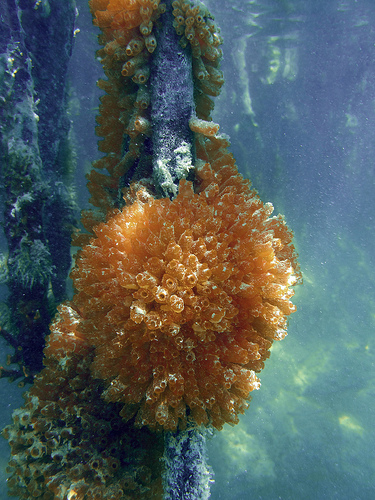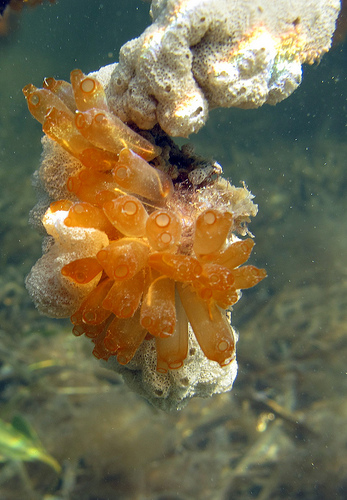Adaptation
Mangrove tunicates have a very useful adaptation. They are able to produce a chemicals. These chemicals are toxic to many of the animals that would want to prey upon them. The bright orange pigmentation that the mangrove tunicate is designed to warn predators against this.
In particular Ecteinascidia turbinata have
very high concentrations of the element vanadium. The vanadium is found
in the tunicates blood and there are also many vanadium compounds. The high
concentrations of this element make the sea squirt distasteful. This
adaptation is very useful to the sessile adults. Without the ability to
flee from predators tunicates are at great risk. In fact there is only
one organism that can feed upon the mangrove tunicate. It is the
maritigrella crozieri also known as the tiger flatworm.
The mangrove tunicate is fairly tolerant to temperaturechanges. Tunicates can live in temperatures ranging from 25 to 32 degrees Celsius or 77 to 90 degrees Fahrenheit. When temperatures drop to around 17 degrees Celsius(63 degrees Fahrenheit), the tunicates die back leaving the stolons remaining. The colonies are connected to each other with a structure called a stolon. When the temperatures rise again so do the tunicates.
Although the mangrove roots offer some protection, they are usually located near cities which can introduce many pollutants that affect salinity. The sessile adult can withstand relatively significant changes in salinity. If however there is a gradation of salt levels in the water column, called a halocline, the larvae may have a reduced ability to swim vertically.
Learn about its feeding habits by looking at the page on nutrition.